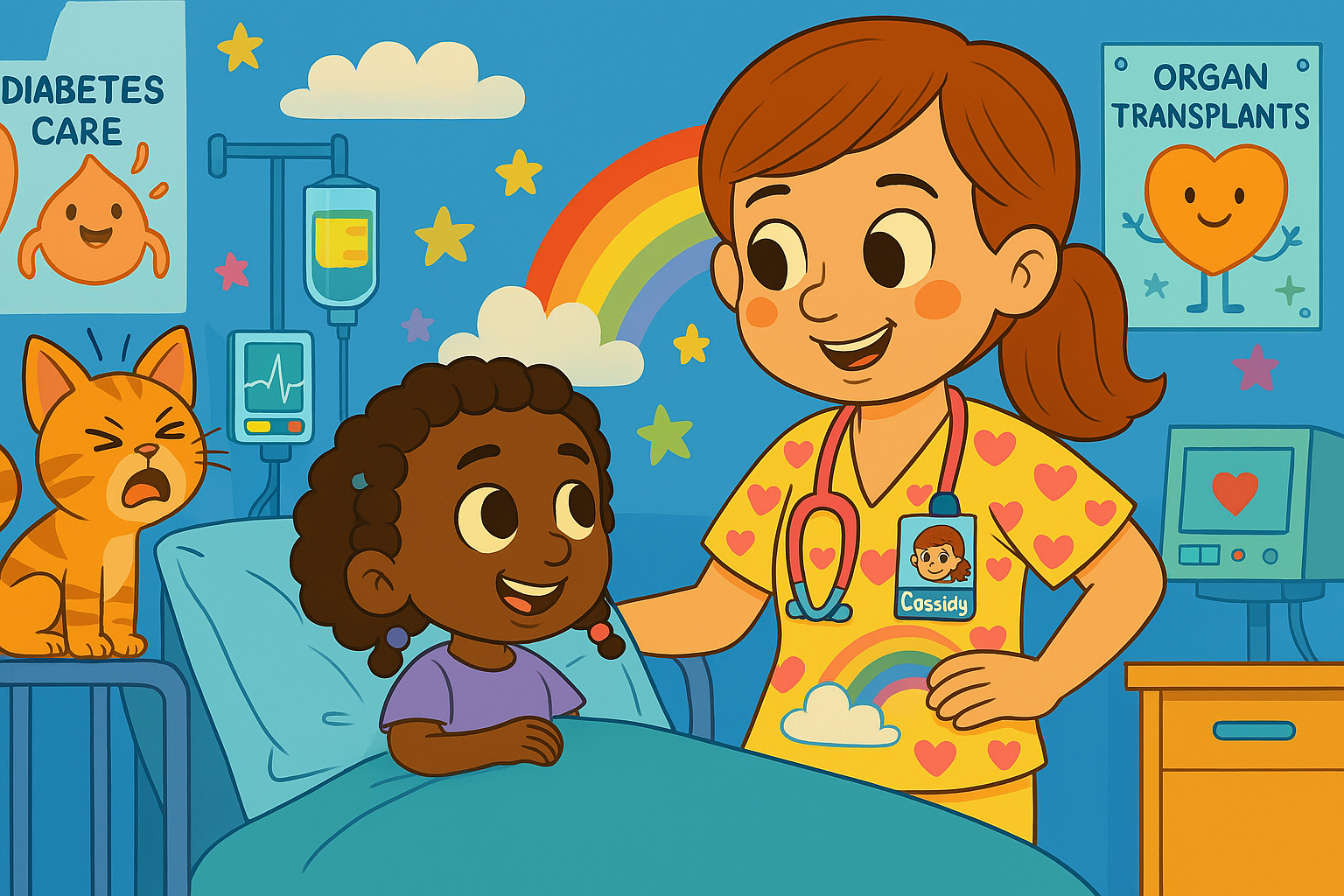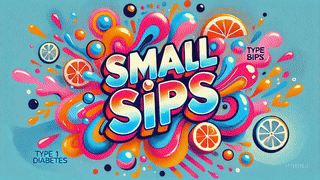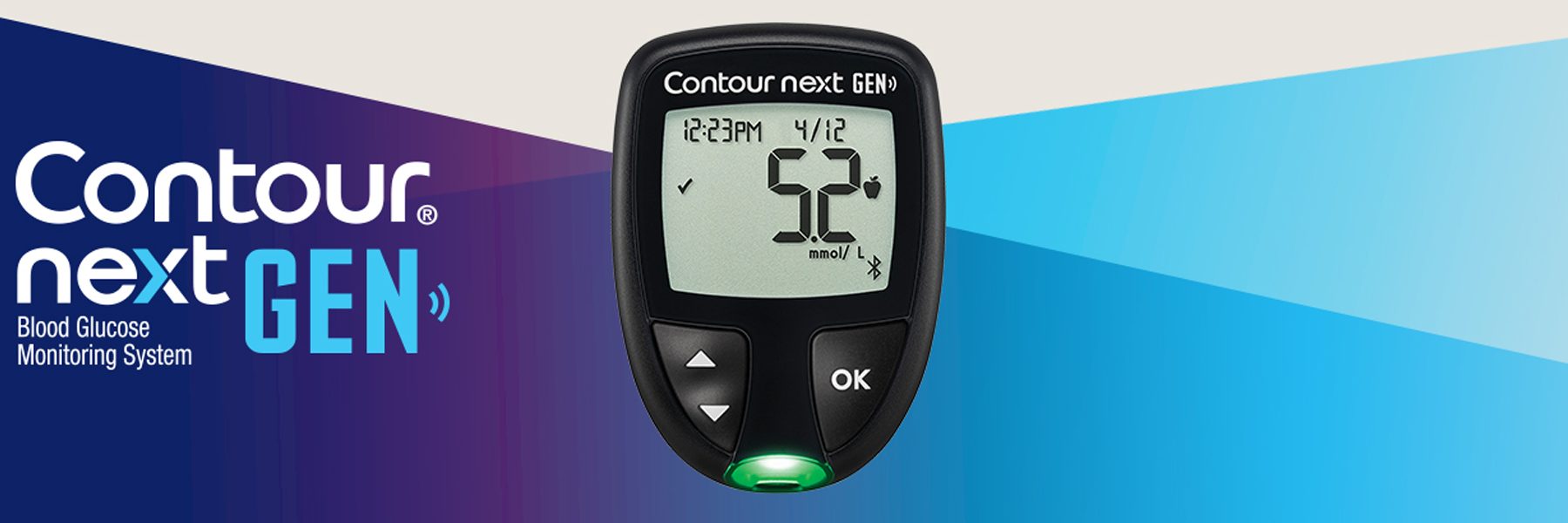#1463 Small Sips: Low Before High
You can always listen to the Juicebox Podcast here but the cool kids use: Apple Podcasts/iOS - Spotify - Amazon Music - Google Play/Android - iHeart Radio - Radio Public, Amazon Alexa or wherever they get audio.
Preventing highs is easier than correcting them—catching small dips early leads to better control.
+ Click for EPISODE TRANSCRIPT
DISCLAIMER: This text is the output of AI based transcribing from an audio recording. Although the transcription is largely accurate, in some cases it is incomplete or inaccurate due to inaudible passages or transcription errors and should not be treated as an authoritative record. Nothing that you read here constitutes advice medical or otherwise. Always consult with a healthcare professional before making changes to a healthcare plan.
Scott Benner 00:00 Hello friends, welcome to the sips series. These foundational strategies were nominated by listeners. They told me, these are the ideas in the podcast that truly made a difference for them. So I distilled them down into short, actionable insights. There's not going to be any fluff or complex jargon, just practical, real world diabetes management that you can start applying today. And I know your time is valuable, so we're keeping these short. Another small sip will come out once a week for the foreseeable future. If you like what you hear, check out the Pro Tip series or the bold beginning series for more. Those series are available in the menu at Juicebox podcast.com and you can find complete lists of all of the series in the featured tab on the private Facebook group. Please remember that nothing you hear on the Juicebox Podcast should be considered advice medical or otherwise, always consult a physician before making any changes to your health care plan or becoming bold with insulin. The questions you have, I guarantee you there's answers to them in the Juicebox Podcast, and it's all free. You Jenny, we're doing what I think I'm going to be calling small sips in the titles, not sure yet. It's a kind of a fun way to think of it. I don't know what else to do. Honestly, sometimes I run out of ideas, but we're taking concepts from the podcast and talking about them in really, like small chunks. So this next one is low before high. It's easier to impact a low or falling blood sugar than it is to bring down a high blood sugar. Apparently, that was said in WoW episode 44 getting off the diabetes roller coaster. And then we did a defining diabetes at 269 called Low before high. But oh, now we've got some separation of about eight years between the first time it was said. And now it can't be that long ago, can it anyway? Long time? Yeah, let's just try not to think it was that long. I think
Jennifer Smith, CDE 02:22 it has been about eight years, because I think we started this when my youngest was first born, really, and he will be eight in January. No
Scott Benner 02:32 kidding, I'm sorry I've drugged me through this for so long.
Jennifer Smith, CDE 02:36 I'm glad you have
Scott Benner 02:38 Jenny and I both drank at the same time. We've been doing this together way too long, but so to me, I know I said it's easier to impact a lower falling blood sugar than to bring down a high. That's how I remember saying it. It's how I think about it. And I've said to people in the past, I'll say it here happily, like, if I'm in charge of your diabetes, I'm gonna come from that perspective, like, that's a daily and I want to be clear, like, even though that's a daily mantra for me, I'm not saying, I want you running around with your blood sugar under 70. I'm not saying, like, oh, we'd shoot for 60, and then we'll fix it. Like, I'm not saying that. I'm saying play down in the numbers 7080, 90, before erring on the side of caution, I guess is kind of how I think of it. Does that make sense to you?
Jennifer Smith, CDE 03:28 It does, and I don't think, as you just said, You're not encouraging, no, a roller coaster at all. What the goal is? Kind of a rule of small numbers, if you will, right? If your blood sugar is rising, and you know that there might not be enough there, you know is add a little bit extra so that it doesn't get as high, which is harder to bring down. And then on the back end of if it was a little bit too much, especially with our A I D systems that we have now, it's likely that it's going to catch it for you, or that you could easily catch it with a jelly bean or two. Yeah, right. Again, not the goal long term, because you don't want to constantly be catching lows or you're adding in calorie value that your body doesn't need.
Scott Benner 04:14 So given over proper respect to the idea that once your blood sugar gets elevated, it needs more insulin to bring down a number, just meaning that if there's an amount that brings you from 200 to 100 that same amount doubled isn't necessarily going to bring you from 300 to 100 right? I mean, people talk about in all different ways, but you experience some sort of insulin resistance when your blood sugar is higher, and so I just think better low than high, not meaning Low. Low meaning lower, better lower than high. It's also a term, like people are not confused by it. It's obviously a well understood idea in the podcast, but for somebody who's just tripping across this in like a clip somewhere, what I'm saying is, if you stay in. The lower numbers, things are easier. Now my expectation is that people hear that and think, oh, yeah, sure. Well, if I could do that, I would just do that. But you know, like, you know what I mean, like, that doesn't sound so easy. I'm not saying it's easy to keep your blood sugars 7080, 90, 100 110 in there, but there are tools within the podcast that will help you understand how to do that. About Pre Bolus thing, getting your settings right, how to impact certain foods that you may not recognize are requiring more insulin than your insulin to carb ratio might indicate things like that right. Adjustment for variables, all the things, yeah, and the other thing is, is that when you're higher and you make a big Bolus to bring it down, you are much more likely to experience a low later, which you very well may over treat, end up going back up again. And I think that's how this idea popped up in an episode called Getting off the diabetes roller coaster, because you know, over and over again, you're going to see people who are just living a life of up and down. And it is. And I'd like Jenny to speak about this for a minute, but stability is a much healthier place to live in than the roller coaster. Can you tell people why it
Jennifer Smith, CDE 06:09 is so long term? I always give the idea of an A 1c right. I see in the diabetes community online, especially the aim for these much, much lower a 1c is right. And I think the best explanation is you could have an A 1c that's 6.5 and have what we call standard deviation, which is the variance up and down from what that average a 1c suggests. And if your standard deviation is a low number, that means that that a 1c of 6.5 has stability. It means that you not having the roller coaster up down, like the Rocky Mountains, your more gentle rolling hills kind of up and down through the course of the day. That long term is better in terms of prevention for micro vascular, the small vessel, nerve eyes. You know, the vessels in the eyes preventing complications down the road. Stability is what we're aiming for, right? So the wider the variants, the more up and down again that roller coaster, which means that your body has to constantly move through a wide range of glucose values. And I see it very common in kids, and what their parents or their teachers suggest, it's not working, right? It's not working because their blood sugar might be 200 to start the day, and then they might Coast Way down into lunchtime. They can't Pre Bolus because their blood sugar is already at 60 at lunchtime, and then, without the Pre Bolus, then they're at 200 again an hour after lunch, and then they have recess, and it comes coasting back down that kid or that adult. You feel horrible when your blood sugar is coasting through such a wide range of blood sugar numbers. The more stability, the better you're going to mentally feel, the more, I guess, the better the learning capacity of a child or a teenager, even a college student, is going to be the more attentive at work you're going to be as an adult. So I
Scott Benner 08:06 just think that as you're trying to figure that out, if you're shooting for a lower a 1c by having lows half the time and highs half the time, and like you said, then the standard deviation says, Okay, well, you have a lower a 1c I'd prefer you had a 140 blood sugar that was super stable all day. Had a six and a half a 1c and learned how to make that 140 or 130 then learned how to make that 130 or 120 until you figured out the right the amount of insulin and the timing required to keep you as much as possible there. I
Jennifer Smith, CDE 08:39 think that's really valuable to say, because I think a lot of people come in with really variable blood sugars or just consistently running high, but have stability. And it's it's hard to get them to see that. Okay, your blood sugar is higher than we want it to be, but at least you have stability. You're not having this roller up and down. Great. We have an easier time actually adding a little bit extra insulin and keeping the stability there. As your body adjusts to the lowering of blood sugar values, you're also going to feel a lot better, rather than just going from an average of 180 down to an average of 100 that doesn't necessarily feel good within two days
Scott Benner 09:15 either. Yeah, you're so close. If you have stability at like 140 for example, you're just a couple of turns of a couple of knobs of getting where you want to be. Very likely. Okay, cool. I appreciate this one. Thank you. Of course. Are you starting to see patterns, but you can't quite make sense of them? You're like, Oh, if I Bolus here, this happens, but I don't know what to do. Should I put in a little less, a little more? If you're starting to have those thoughts, you're starting to think this isn't going the way the doctor said it would. I think I see something here, but I can't be sure. Once you're having those thoughts, you're ready for the diabetes Pro Tip series from the Juicebox Podcast. It begins at Episode 1000 i. You can also find it at Juicebox podcast.com up in the menu, and you can find a list in the private Facebook group. Just check right under the featured tab at the top, it'll show you lists of a ton of stuff, including the Pro Tip series, which runs from episode 1000 to 1025 if you or a loved one, was just diagnosed with type one diabetes, and you're looking for some fresh perspective. The bowl beginning series from the Juicebox Podcast is a terrific place to start. That series is with myself and Jenny Smith. Jenny is a CD CES, a registered dietitian and a type one for over 35 years, and in the bowl beginning series, Jenny and I are going to answer the questions that most people have after a type one diabetes diagnosis. The series begins at episode 698, in your podcast player, or you can go to Juicebox podcast.com and click on bold beginnings in the menu. If you're not already subscribed or following in your favorite audio app, please take the time now to do that, it really helps the show and get those automatic downloads set up so you never miss an episode. Thank you so much for listening. I'll be back very soon with another episode of The Juicebox Podcast. You.
Please support the sponsors
The Juicebox Podcast is a free show, but if you'd like to support the podcast directly, you can make a gift here. Recent donations were used to pay for podcast hosting fees. Thank you to all who have sent 5, 10 and 20 dollars!































